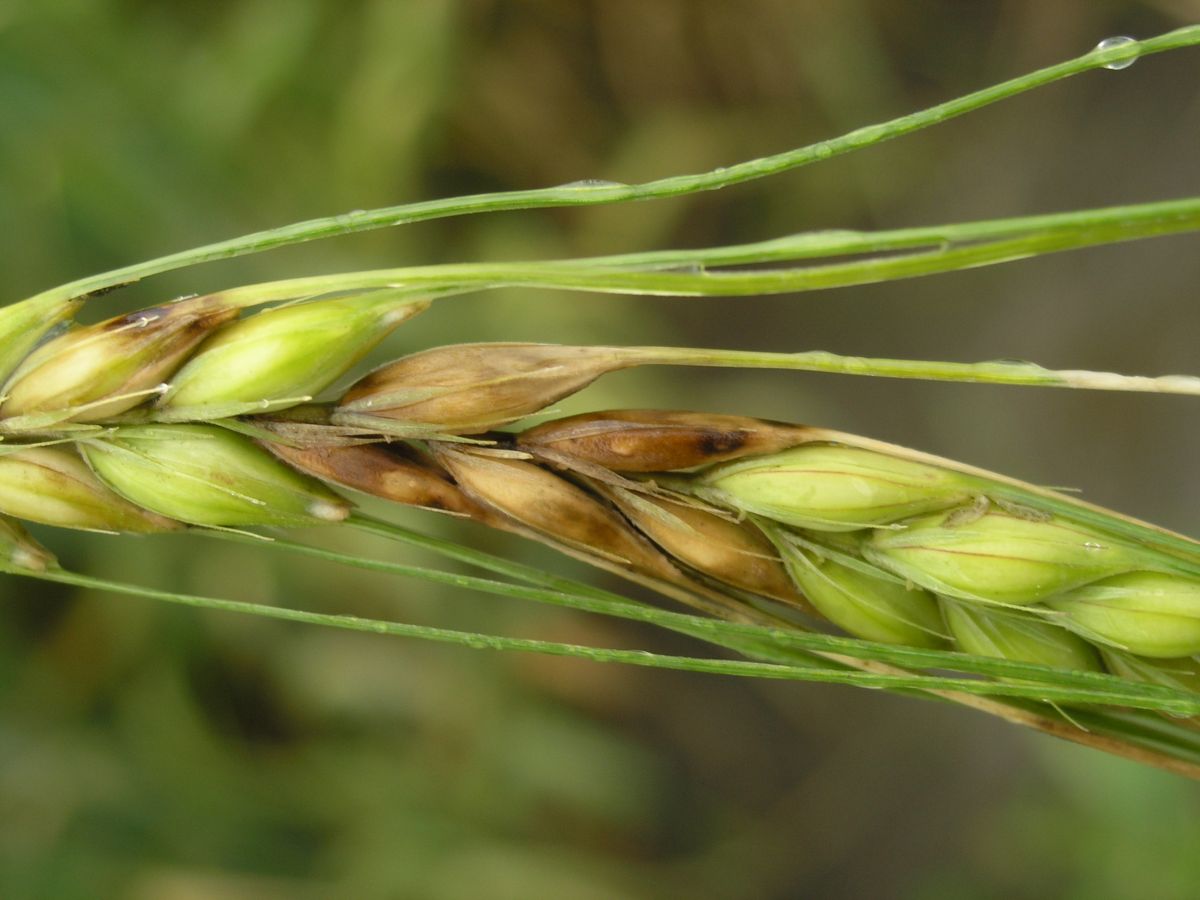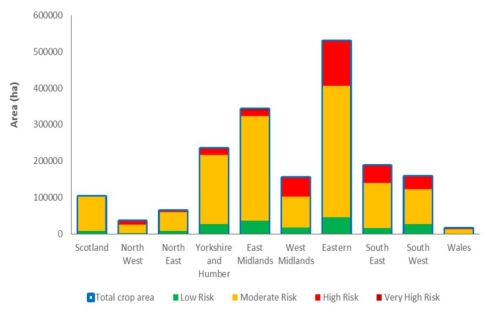
Around 73% of the GB winter wheat area was at moderate risk and 17% at high risk of fusarium infection during the flowering period, according to AHDB-funded monitoring work.
Fusarium is widely distributed in soil and associated with plants, most species are harmless, and are relatively abundant members of the soil microbial community.
Some species produce mycotoxins in cereal crops that can affect human and animal health if they enter the food chain
There are legal limits for fusarium mycotoxins in wheat intended for human consumption and guidance limits for feed grain.
The owner (farmer, merchant or processor) is legally obliged to ensure the grain is safe for human consumption.
The risk results for 2016 are in contrast to the relatively low fusarium infection risk reported in 2015.
Due to the highly local nature of infection risk, growers are reminded to "follow mycotoxin management guidelines and to calculate field-level mycotoxin risk scores for recording on the grain passport", says AHDB Cereals & Oilseeds.
Risk level estimates for 2016
Risk levels were estimated based on crop growth stage information, gathered by an established network of independent agronomists covering 30 counties in England and Scotland, and daily rainfall data.
Analysis of regional fusarium infection risk data revealed that of the winter wheat area in Great Britain (GB):

10% (189,000ha) – with an estimated tonnage of 1.4Mt – was at low risk
73% (1,320,000ha) – with an estimated tonnage of 10.1Mt – was at moderate risk
17% (304,000ha) – with an estimated tonnage of 2.3Mt – was at high risk
<1% (3,000ha) – with an estimated tonnage of 26,000t – was at very high risk
Rainfall is a major factor in determining risk. Due to the localised nature of showers, a significant variation in infection risk level was reported across GB.
All GB regions had crops at both low and moderate fusarium infection risk. The largest areas of moderate and high-risk crops were located in the southern and eastern regions.
Areas with the highest risk levels had a significant amount of crops in flower as the weather turned more unsettled from mid-June onwards.
Dr Dhan Bhandari, who manages grain quality research at AHDB, said: "Flowering started at the beginning of June, when conditions were generally settled.
"The weather turned during the peak flowering period, which happened from the middle to the end of June.
"This exposed relatively large areas of winter wheat to conditions which favour fusarium infection."
Regional risk charts
The above chart shows area of winter wheat crops in each GB region at high, medium and low risk of fusarium infection.
The charts reveals the proportion of winter wheat crops flowering and estimates of whether they were at ‘very high’, ‘high’, ‘medium’ or ‘low risk’ of fusarium infection.
Areas identified with the largest areas of high-risk crops were located in Cambridgeshire, Kent, Norfolk, Shropshire and Staffordshire. In these areas, crops were often exposed to over 40mm of rain during the flowering period.
A small proportion of crops were classified as being at very high risk of fusarium infection. These were located in Derbyshire and Nottinghamshire, which saw heavy rainfall (up to 26mm) falling on 14 to 15 June.
Accounting for rain
Dr Bhandari said: "The best indicator of risk will always be based on field-level rainfall data recorded during the flowering period for the crop in the ground."
Infection risk can be mitigated to some degree by a T3 spray and the majority of the wheat area received a well-timed spray at the start of the flowering period.
Dr Bhandari continued: "As always, there are exceptions where the weather derails the best laid plans and interrupts spraying.
"Further rainfall, particularly after ripening, will also allow for secondary infection.
"But the important thing is to record what happened on the mycotoxin risk assessment and let the results guide your management decisions."
